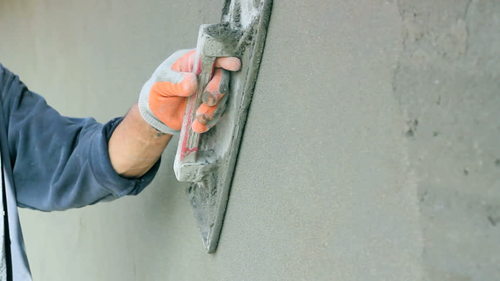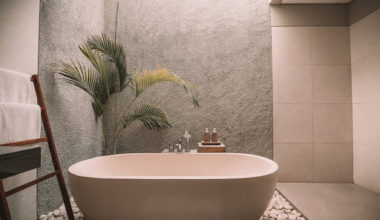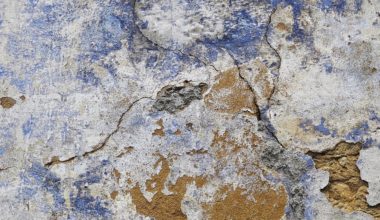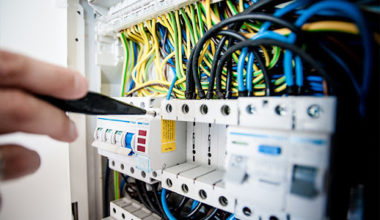1. Exceptional Plasters:
Plasters of exceptional mixes are needed for giving enhancing elements to the outer layer of walls and for particular purposes like water-sealing, limiting shrinkage, and so on
2. Plaster:
Cement Plaster is given as an enhancing highlight where required. The plaster is made out of three coats making a thickness of 25 mm. The main coat, 10 mm thick, is known as a scratch coat, the subsequent coat, which is additionally 10 mm thick, is called an earthy colored coat.
The completing coat or last coat is 4 to 6 mm thick and is called a white coat. The mix utilized in first and second coat is 1: 3 cement and sand with around 10% by weight hydrated lime. The mix of the completing coat is 1: 2 cement sand mortar. For the most part, white or hued cement is utilized for accomplishing a brightening highlight.
3. Waterproof Plaster:
Waterproof plaster is needed for insurance of the brickwork wall from the entrance of dampness and in this manner killing or diminishing soddenness of wall. The plaster is made of cement and sand mix 1: 2. Crushed alum is added at the pace of 12 kg for every cubic meter of sand. Delicate cleanser at the pace of 75 gms for each liter is included the water for mixing. Alum and cleanser respond artificially and seal the pores in the plaster.
4. Lime Plaster:
Lime plaster is ready by mixing equivalent volumes of lime and sand. Bubbled arrangement of bael natural product (in the extent of 3 kg of gur and 1.5 kg bael natural product in 100 liter of water), gugal and roped hemp are now and again added at the pace of 1 to 2 kg for each cubic meter of mortar to forestall the appearance of cracks on a superficial level.
5. Composite Plaster:
Composite plaster is ready by mixing cement, lime, surki or pozzolana and sand in various extents. The plaster is applied on surfaces outer or inside in various thicknesses and in a couple of coats, as fundamental.
Kinds of Plaster Finishes utilized in Building Construction are:
Various kinds of plaster gets done with various appearances are accessible as follows.
- Smooth cast finish
- Harsh cast finish
- Sand confronted finish
- Rock run finish
- Rejected completion
- Depeter finish
- Finished completion
- Smooth Cast Plaster Finish
To get smooth cast finish, mortar utilized ought to be in the proportion 1: 3 [cement: sand]. Fine Sand ought to be taken to set up the mortar. For spreading the mortar, skimming buoy or wood coast is best reasonable apparatus. Thus, smooth and evened out surface is acquired at last.
Unpleasant Cast Plaster Finish
Harsh cast finish is additionally called as splash run finish. Mortar used to get unpleasant cast finish consist coarse total alongside cement and sand. Their proportion is around 1: 1.5: 3. The size of coarse total utilized is 3mm to 12mm. Enormous amount of mortar is taken by scoop and it is run into the surface and evened out utilizing wooden buoy. Generally this sort of plaster finish is liked for outside renderings.
Sand Faced Plaster Finish
To get sand confronted finish two layers of Wall Plaster is required. For first coat, 12mm thick layer of cement sand mortar in 1: 4 proportion is liked. The first coat ought to be given in quite a while. And afterward it is considered relieving for 7days. After that 8mm thick layer of second coat with cement and sand in 1:1 proportion is applied. Level the surface utilizing wipe. At last take some sand and screened it to acquire uniform grain size. The screened sand is applied on the subsequent coat utilizing skimming drift or wooden buoy. At long last, sand confronted get done with uniform grain size of sand is acquired.
Stone Dash Plaster Finish
Stone scramble finish requires mortar layer of 12mm thickness with cement and sand in the proportion of 1: 3. Subsequent to plastering rocks of size 10mm to 20mm are run on to the plastered surface. Then, at that point, press them into the plastered surface utilizing wooden buoy gradually. In the wake of solidifying they give stylish appearance to the construction.
Rejected Plaster Finish
To get rejected completion, apply last layer of 6 to 12 mm thickness and permitted it to dry. After some time utilizing steel sharp edge or plate scrap the plastered layer up to 3mm profundity. Rejected completion is less at risk to cracks.
Depeter Plaster Finish
This is likewise like stone scramble finish. In any case, for this situation bits of rock or stones are utilized instead of stones.
Finished Plaster Finish
Finished completion is acquired from the plaster plastering in which various surfaces or shapes are made on the last coat utilizing reasonable apparatuses.











